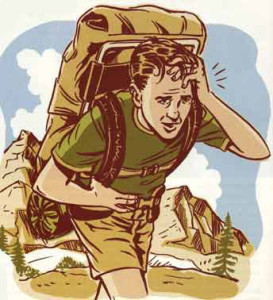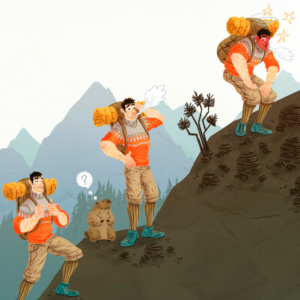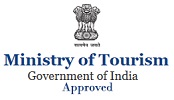 Lack of proper acclimatization can spoil your entire experience when you trek the Himalayas. This is one ailment that every trekker will have to deal with, no matter how experienced they are or how many treks they have undertaken in the past. And just to burst your bubble, no matter what your fitness level and strength might be, the symptoms of altitude sickness WILL start to show themselves in some or the other magnitude as soon as you move past the height of 1500 mts. And Beware, if not managed properly, these symptoms can even bring your Himalaya trekking experience to a full stop!
Lack of proper acclimatization can spoil your entire experience when you trek the Himalayas. This is one ailment that every trekker will have to deal with, no matter how experienced they are or how many treks they have undertaken in the past. And just to burst your bubble, no matter what your fitness level and strength might be, the symptoms of altitude sickness WILL start to show themselves in some or the other magnitude as soon as you move past the height of 1500 mts. And Beware, if not managed properly, these symptoms can even bring your Himalaya trekking experience to a full stop!
Understand what you are up against here.. This will give you a fair warning about your condition, help you get better acclimatized and take preventive action before you are out of help’s reach!
Normal symptoms
When you cross the 1500mts mark, it is time to be alert. On an average, most people start to show certain milder symptoms of altitude sickness around this height. These signs may include lack of sleep, occasional breathlessness, slight nausea, loss of appetite, runny nose and an increased urge to urinate. Some Himalayan hikers also report vivid, wild dreams at around 2500-3800m in altitude. Keep a watch on the occurrence of any of these in your body or in the bodies of your fellow trekkers. This discomfort is the most common form of altitude sickness and will manifest itself in every individual.
Mild symptoms
If you start to notice any of these symptoms then become alert as things are beginning to get serious. Headaches are some of the most common signs on this category. And you will often find that these aches will begin around evening time and will almost always get worse as the night progresses. People also report feeling nauseated and dizzy. Lack of appetite or generally feeling bad and a painful raspy cough also starts to develop as you continue to gain height. If these signs start to show themselves, it is always better to take an extra acclimatization day before moving forward. Never go higher with these symptoms and these should not be taken lightly.
common signs on this category. And you will often find that these aches will begin around evening time and will almost always get worse as the night progresses. People also report feeling nauseated and dizzy. Lack of appetite or generally feeling bad and a painful raspy cough also starts to develop as you continue to gain height. If these signs start to show themselves, it is always better to take an extra acclimatization day before moving forward. Never go higher with these symptoms and these should not be taken lightly.
Serious symptoms
Persistence of a severe headache, vomiting and cough, loss of consciousness, marked blueness of face and lips, extreme difficulty in breathing, severe lethargy and drowsiness are the more severe category of effects of altitude sickness. In such cases the milder symptoms start to get worse at a really fast rate. One of the best markers of severe altitude sickness is Ataxia or loss of co-ordination, inability to walk in a straight line or else walking like a drunk person. If any of this happens, abort the Himalaya trek there and then and descend immediately. Continuing to trek can even put your life at risk!
Hope this helps you be safe while on your trek this summer!


